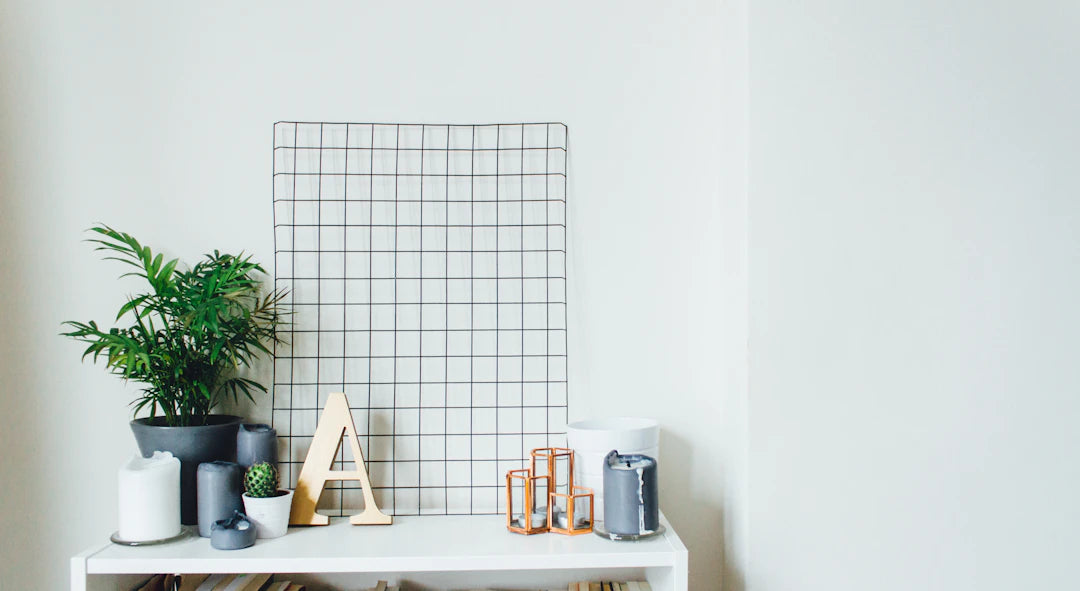In a world where our living spaces reflect our personalities, art becomes the ultimate medium for self-expression. Personalizing your space with artwork not only elevates your interior design but also brings warmth and character to your home. This guide will explore creative ways to incorporate art into your living environment, helping you transform your space into a sanctuary that tells your unique story.
Understanding the Importance of Art in Home Decor
The significance of art inour lives goes beyond mere aesthetics. Here are a few reasons why incorporating artwork into your space is essential:
- Emotional Connection: Art evokes feelings and emotions, creating a deeper connection with your environment.
- Personal Identity: Your choice of art reflects your tastes, interests, and personal journey.
- Aesthetic Appeal: Art can transform a bland room into a visually captivating space.
- Conversation Starter: Unique pieces of artwork can ignite discussions among guests, adding a social element to your decor.
Discover Your Style
Before diving into artwork selection, it’s crucial to identify your personal style. Consider the following aspects:
1. Define Your Aesthetic
Are you drawn to modern, minimalistic designs or classic, vintage pieces? Identifying your style will help narrow down your art choices.
2. Color Palette
Pay attention to the colors in your home. Artwork that complements your existing color scheme can enhance the overall harmony of your space.
3. Themes and Subjects
Consider what themes resonate with you. Nature, abstract, geometric, or cultural art—knowing your preferred subjects can guide your search for the perfect pieces.
Choosing the Right Artwork
With your aesthetic in mind, it's time to explore various types of artwork that can personalize your space:
1. Paintings
Paintings are timeless. Whether you opt for oil, acrylic, or watercolor, they offer depth and character. Look for pieces that speak to you, and don’t hesitate to mix different styles for an eclectic look.
2. Prints
Art prints are an affordable way to fill your space with creativity. From famous artworks to contemporary designs, the options are endless. They can be framed, hung on walls, or even layered for a more dynamic display.
3. Photography
Your personal photography can also serve as stunning wall art. Capture moments from your travels or candid shots of loved ones. Printing them on canvas or as large-format prints can create a striking focal point.
Creating a Gallery Wall
A gallery wall is an excellent way to personalize your space and showcase multiple artworks at once. Here’s how to create one:
1. Select a Theme
Decide on a theme for your gallery wall to maintain coherence. It can be color-based, thematic, or focused on similar styles.
2. Frame Selection
Choose frames that complement the artwork. Mixing frame styles can add an element of surprise, but be careful not to overdo it to ensure balance.
3. Layout Planning
Before hanging, lay out the pieces on the floor or use paper templates to visualize the arrangement. This way, you can play with placement without damaging your walls.
4. Hang with Purpose
Consider height when hanging your artwork. A common rule is to keep the center of the artwork at eye level, allowing it to be easily admired.
Incorporating Different Art Mediums
Artwork comes in various forms, and mixing mediums can create a layered, interesting look:
1. Sculptures
Incorporating sculptures adds a three-dimensional aspect to your decor. They can be displayed on shelves, mantels, or even as standalone pieces on the floor.
2. Textiles
Textile art, such as tapestries or quilts, can add texture and warmth to your space. They are also excellent for sound insulation, making them practical as well as beautiful.
3. Mixed Media
Artists often combine several mediums to create mixed media pieces. These can add a unique flair and are versatile enough for various design styles.
Infusing Personal Memories
Using personal memories as art can significantly enhance the sentimentality of your space:
1. Family Portraits
Displaying family portraits instills a sense of belonging. Consider varying the sizes and styles of photographs for an added visual interest.
2. Travel Memorabilia
Consider framing travel tickets, postcards, or small trinkets from your adventures. These items can remind you of your journeys and experiences while also adding a splash of color to your walls.
3. DIY Artwork
Creating your own artwork can make your space genuinely unique. Whether it’s painting, drawing, or crafting, the possibilities are endless, offering a personal touch that can’t be replicated.
Maintaining Aesthetic Harmony
As you incorporate artwork into your space, maintaining aesthetic harmony is vital to create a cohesive environment:
1. Balance and Symmetry
Consider the balance between the art and surrounding elements. Pair larger pieces with smaller ones, or cluster multiple images to create a balanced composition.
2. Consistency in Frames and Matting
Using similar frames or matting can tie diverse pieces together, providing a uniform look while still celebrating variety.
Seasonal and Rotational Art
Consider changing your artwork seasonally. This practice not only keeps your space fresh but allows for versatility in your decor:
1. Seasonal Themes
Select artwork that embraces different seasons, such as warm colors in fall or vibrant, bright hues in summer.
2. Rotating Art Pieces
Store some pieces away and rotate them every few months. This strategy gives your home a new vibe without extensive redecorating.
Embracing Local Artists
Supporting local artists is not only beneficial for the community but also enriches your space:
1. Unique Finds
Local artwork often tells a story tied to your community. Each piece can offer a unique touch and connection to where you live.
2. Supporting Talent
Purchasing art from local artists helps foster creativity and sustain the local economy, enabling more talents to emerge.
Final Touches: Lighting and Placement
The right lighting can dramatically impact how your artwork is perceived.
1. Wall Lighting
Consider wall sconces or picture lights to highlight specific pieces. The illumination can create a gallery-like feel and draw attention to your favorite artwork.
2. Natural Light
Be mindful of natural light exposure, as it can cause art to fade over time. Rotating pieces or using UV-protective glass can help preserve your art's vibrancy.
Your Space Awaits Your Personal Touch
Personalizing your space with artwork is a fulfilling journey that allows you to express who you are creatively. By selecting pieces that resonate with your style, incorporating different mediums, and arranging them thoughtfully, you can transform your home into a sanctuary that feels uniquely yours. Embrace the experience, enjoy the process, and let your creativity shine through every brushstroke, photograph, and handcrafted piece. Your living space is truly a canvas, waiting for you to paint your story!

